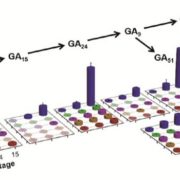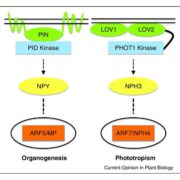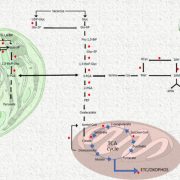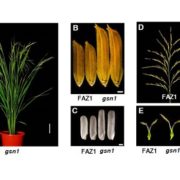Role of C-terminal modules in phytochrome signaling
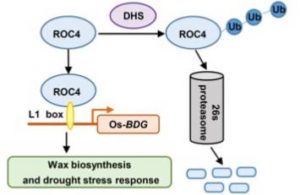 Phytochromes are photoreceptors found in many organisms including bacteria, fungi and plants. Plant phytochromes regulate many aspects of plant growth and development, including germination, shade avoidance, defense against pests, and senescence. Phytochromes most likely transduce signals through the degradation of phytochrome-interacting transcription factors (PIFs) by the N-terminal photosensory module. The C-terminal module, which includes a histidine kinase-related domain (HKRD), is thought to not participate in signaling. However, Qui and colleagues report that the C-terminal module of the Arabidopsis phytochrome B (PHYB) causes the degradation of PIF3 and activates genes related to photosynthesis. This is due to the role of HKRP as a dimerization domain for the homodimers and heterodimers of PHYB. If HKRP is modified there is no longer PIF3 degradation, while modifications of the N-terminal module have little effect on PIF3 degradation. This paper describes the important role of the C-terminal modules of phyotochromes in dimerization and signaling. (Summary by Julia Miller) Nature Comms. 10.1038/s41467-017-02062-6
Phytochromes are photoreceptors found in many organisms including bacteria, fungi and plants. Plant phytochromes regulate many aspects of plant growth and development, including germination, shade avoidance, defense against pests, and senescence. Phytochromes most likely transduce signals through the degradation of phytochrome-interacting transcription factors (PIFs) by the N-terminal photosensory module. The C-terminal module, which includes a histidine kinase-related domain (HKRD), is thought to not participate in signaling. However, Qui and colleagues report that the C-terminal module of the Arabidopsis phytochrome B (PHYB) causes the degradation of PIF3 and activates genes related to photosynthesis. This is due to the role of HKRP as a dimerization domain for the homodimers and heterodimers of PHYB. If HKRP is modified there is no longer PIF3 degradation, while modifications of the N-terminal module have little effect on PIF3 degradation. This paper describes the important role of the C-terminal modules of phyotochromes in dimerization and signaling. (Summary by Julia Miller) Nature Comms. 10.1038/s41467-017-02062-6


